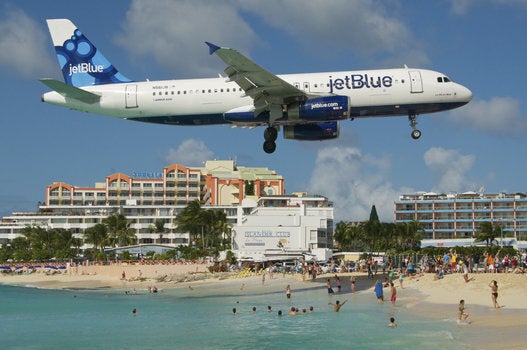
It's no surprise that Canadians are in love with travel. According to one recent global study, Canucks take an average of four trips a year, making room for three domestic jaunts and one international long-haul. We're also among the top 10 travel destinations for foreign adventurers.
Of course, departing and arriving from airports -- big or small -- are a necessary part of anyone's travel itinerary. But what's becoming increasingly clear is that the days when airports existed solely to move us from point A to point B are long gone. Airports are a lot more than just a corridor to drag your stuff through, or a place to hang your hat for a few hours.
Here are three little-known facts that prove airports are more than what you might think:
1.Airports are becoming a destination on travel itineraries.
Let's face it, some airports are more attractive than others. Most of us participate in some form of shopping or dining when on the move, and now more than ever, airport amenities matter. Whether it's purchasing some light reading for the flight, indulging in a favourite meal before heading overseas, or grabbing that steal of a deal at duty free, we're all looking for that special experience -- the cherry on top of our vacations -- and airports are delivering.
Locations like Heathrow in London, O'Hare in Chicago and Shanghai Pudong International in China are destinations within themselves, offering luxury travel experiences that go above and beyond.
Full-service airports are typically larger, globally-focused operations that offer guests travel to seemingly endless destinations and unique experiences before you even take flight, for example:
- At Heathrow, you can sip one of over 26,000 cups of tea served at the airport every year, or purchase a bottle of Chanel No 5 perfume- one is sold every nine minutes.
- Visit China's Shanghai Pudong to check out the architecture -- the building was designed by French architect Paul Andreu to resemble a seagull in flight.
- Foodies can rejoice at Chicago's O'Hare International with the arrival of Rick Bayless' popular Tortas Frontera, voted the best airport restaurant in America by GQ magazine.
- Weary travellers can rest their heads in luxury nap pods that are popping up in airports located in Munich, Dubai and Russia. At a small price for comfort, you can also get a bedside table and a lamp.
These factors might not sway your entire travel itinerary, but they might make you want to organize a layover that'll land you in one of these bustling hubs.
2. Airports give us access to global markets, and build our reputation on the world stage.
Access to other cities, countries and cultures is often taken for granted, but the truth is that we're incredibly lucky to be able to prosper from it.
In 2014, Canada imported more than US$462 billion worth of goods from around the world, over 74 per cent of which came from the U.S. and China. We exported nearly the same, sending more than US$474 billion to other countries within the course of the year. Toronto Pearson International Airport handled over 42 per cent of this cargo.
Thriving countries rely on the ability to import and export goods, including industrial and technical machinery used in manufacturing and medical fields, vehicles, plastics, iron and steel products, natural resources, toys, games, and clothing. But without air travel, we'd be shipping everything by rail or boat -- a relatively lengthy process in comparison, and not without significant challenges.
There is a critical cultural impact that stems from this access, as well. Cities are vibrant, multicultural environments built up by their ability to host things like world-class sporting events, performances, conferences and other cultural events. The Internet certainly keeps us connected virtually, but nothing replaces the ability to move physical goods (and people) worldwide.
3. Airports are powerful economic engines.
The ability to move goods around the world is critical to driving local, national and international economies, but strong economies rely on skilled individuals to help steer the ship, and this is where people movement comes in.
A study by the International Air Transport Association (IATA) lists wealth creation and employment generation as two major economic benefits of air transport. The two are interdependent, with international patterns of trade driving the development of communities around it.
This means that the opportunities available to us in terms of employment -- things like livable proximity to work, employment, and career growth -- are all a result of business patterns created by airports.
So, the next time you're planning a trip, maybe you'll think about airports a little differently, and recognize that they're more than just a means of getting from point A to point B: they're actually one of the major reasons we're able to grow and thrive around the world.
ALSO ON HUFFPOST:
